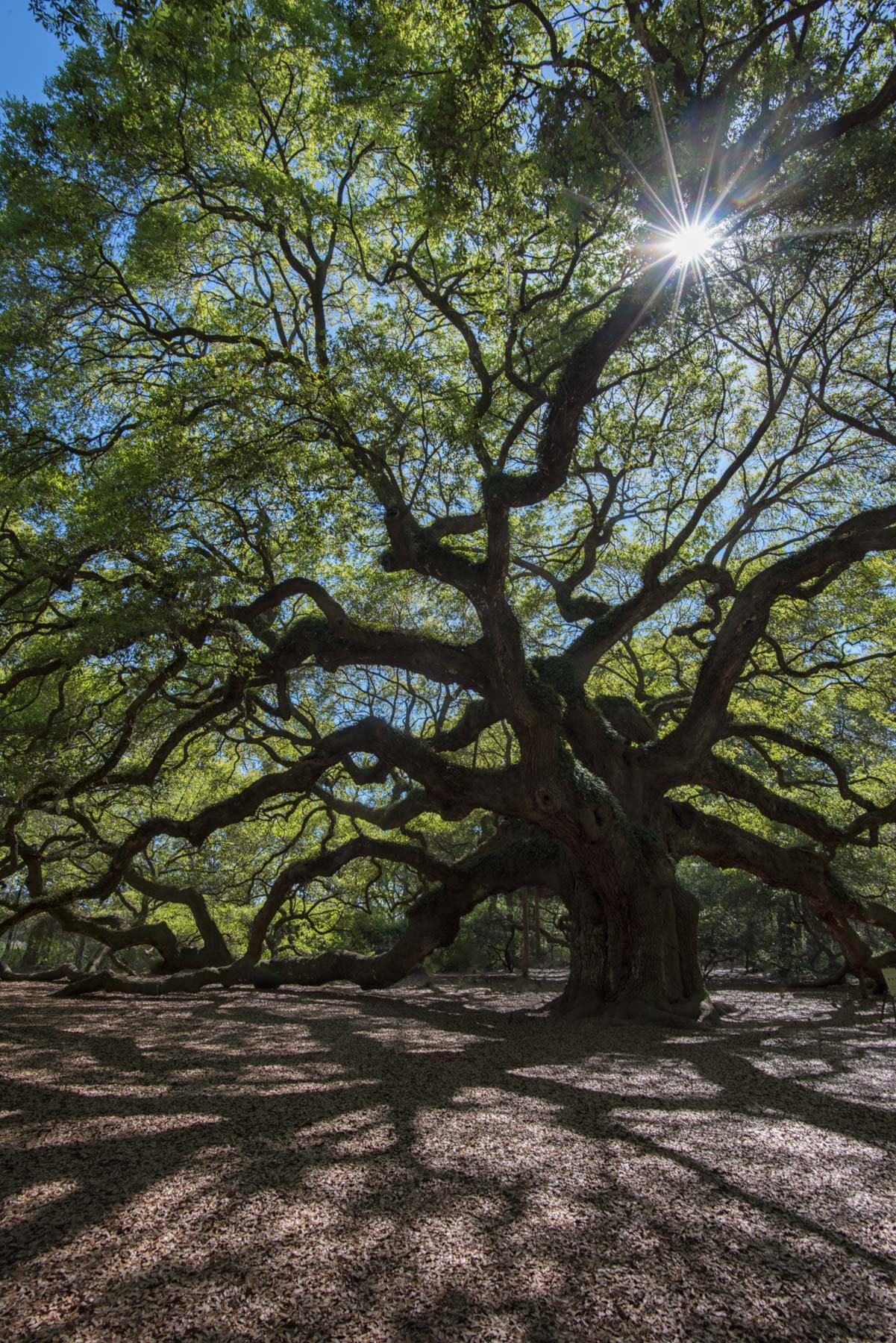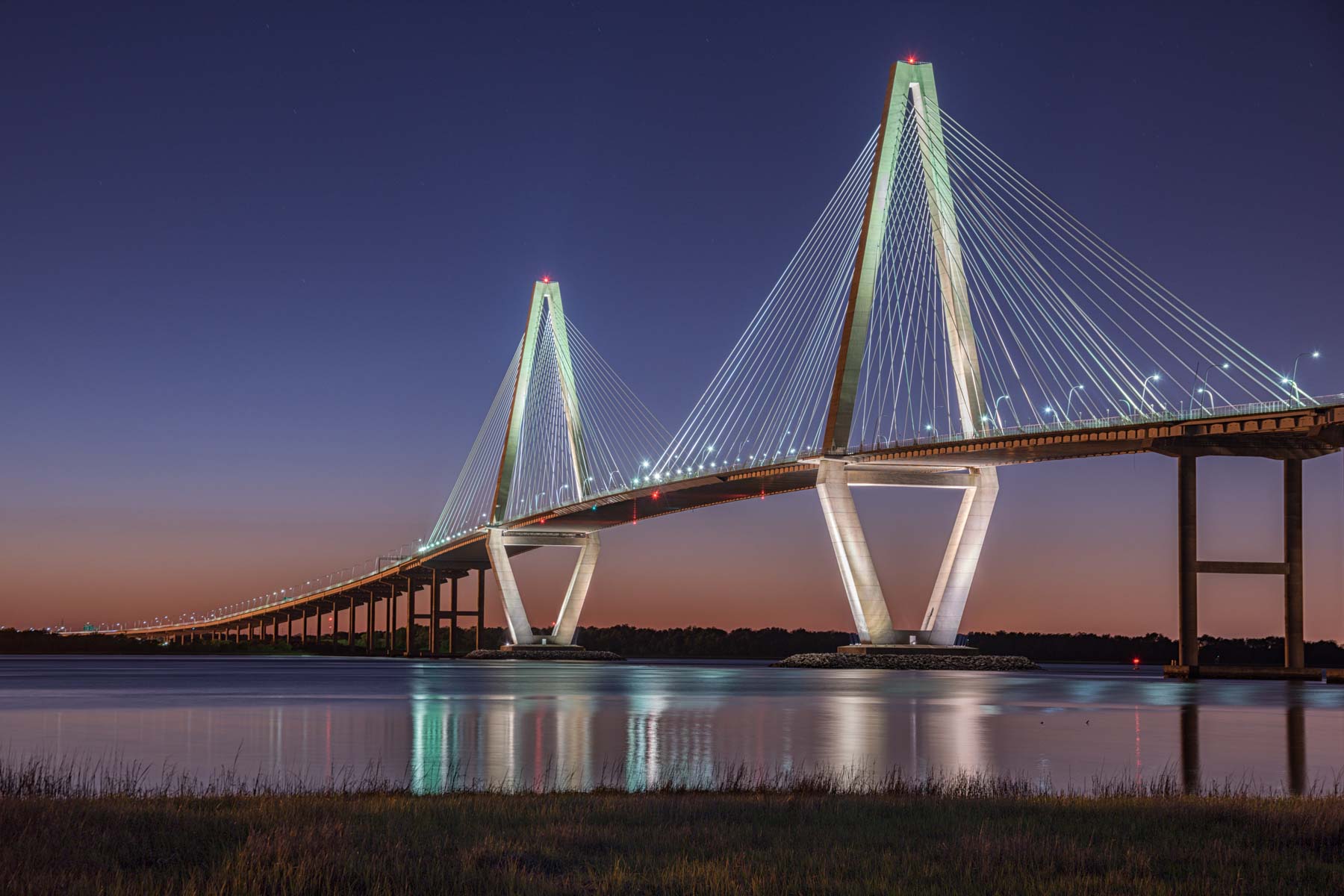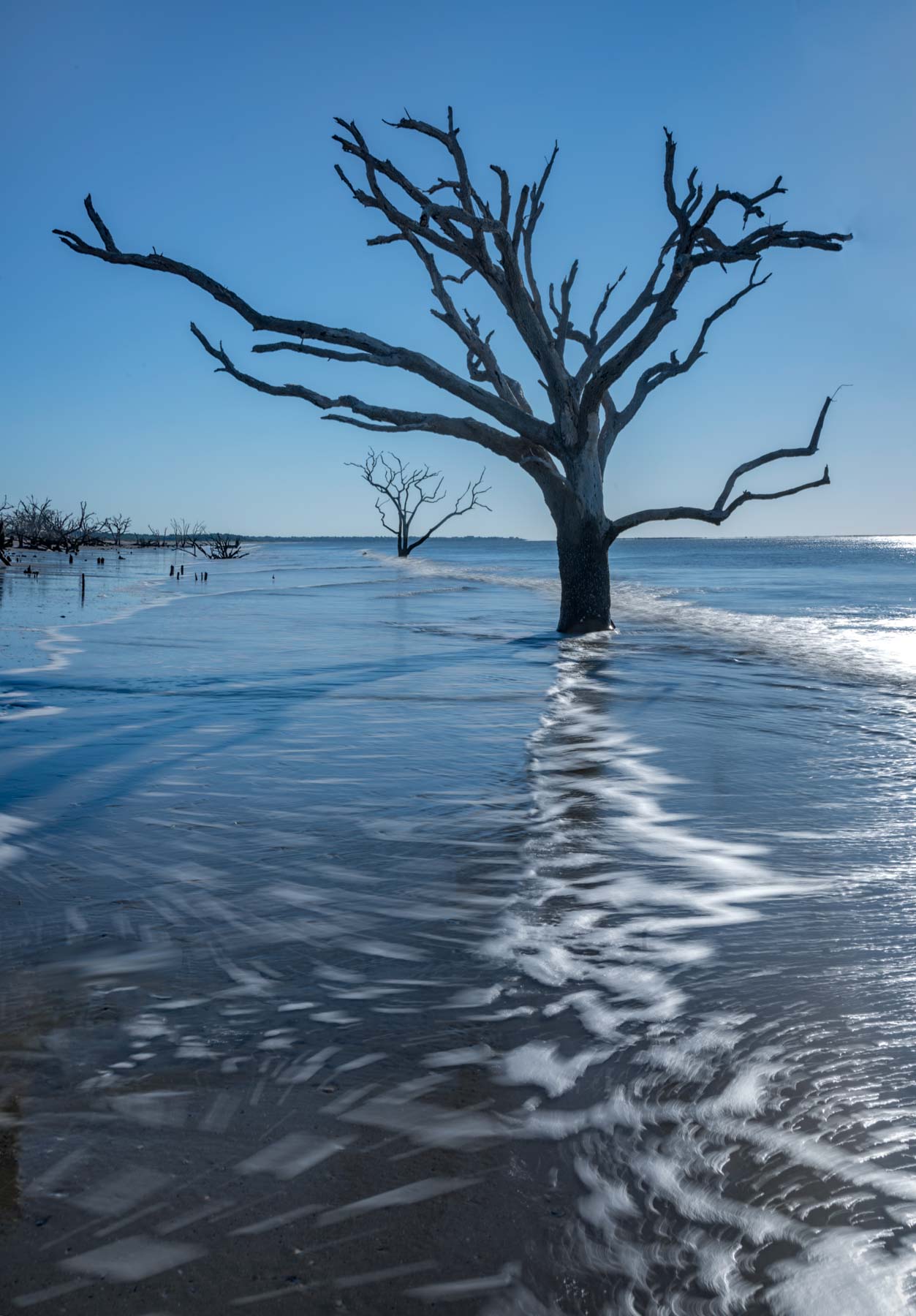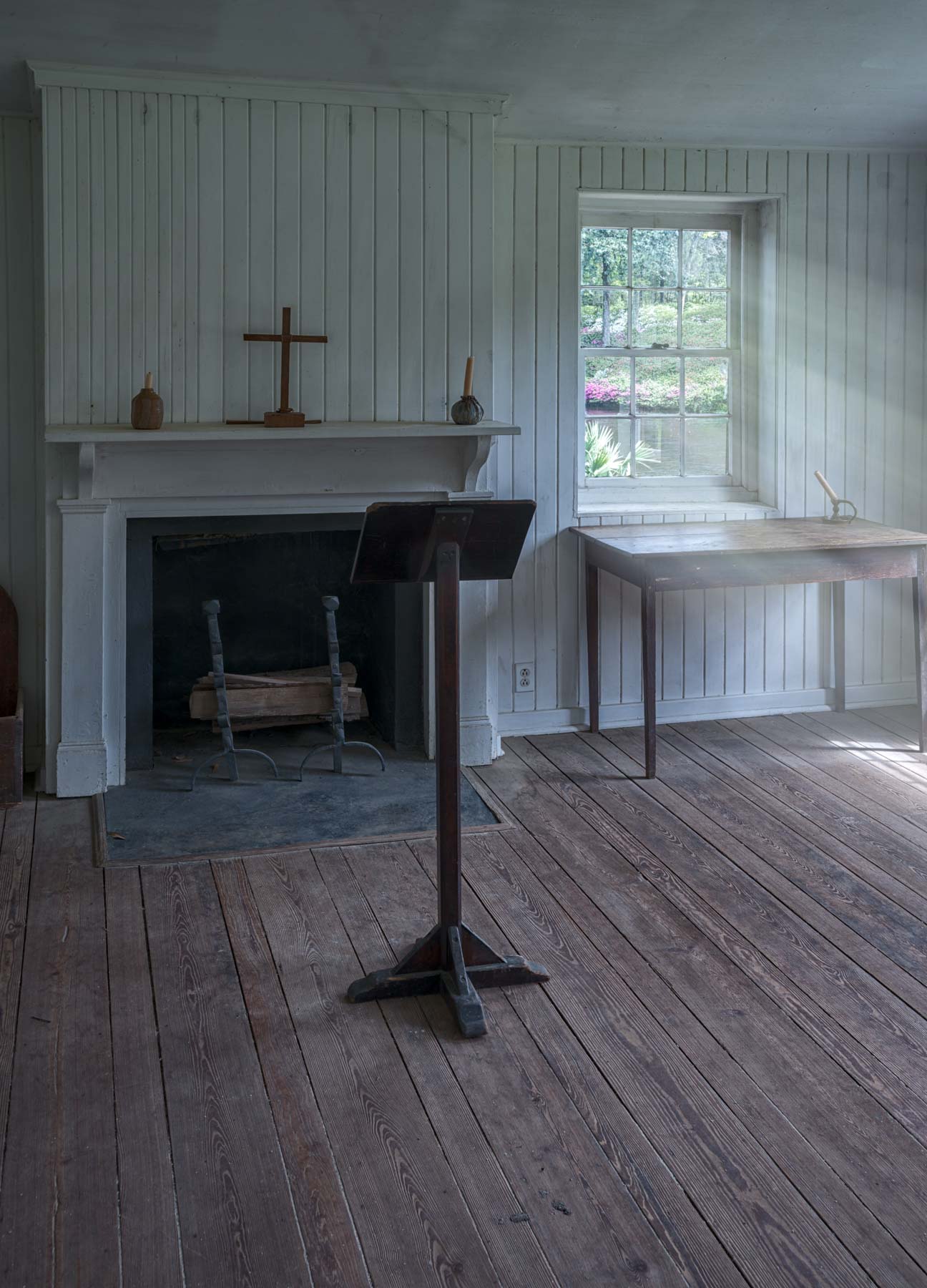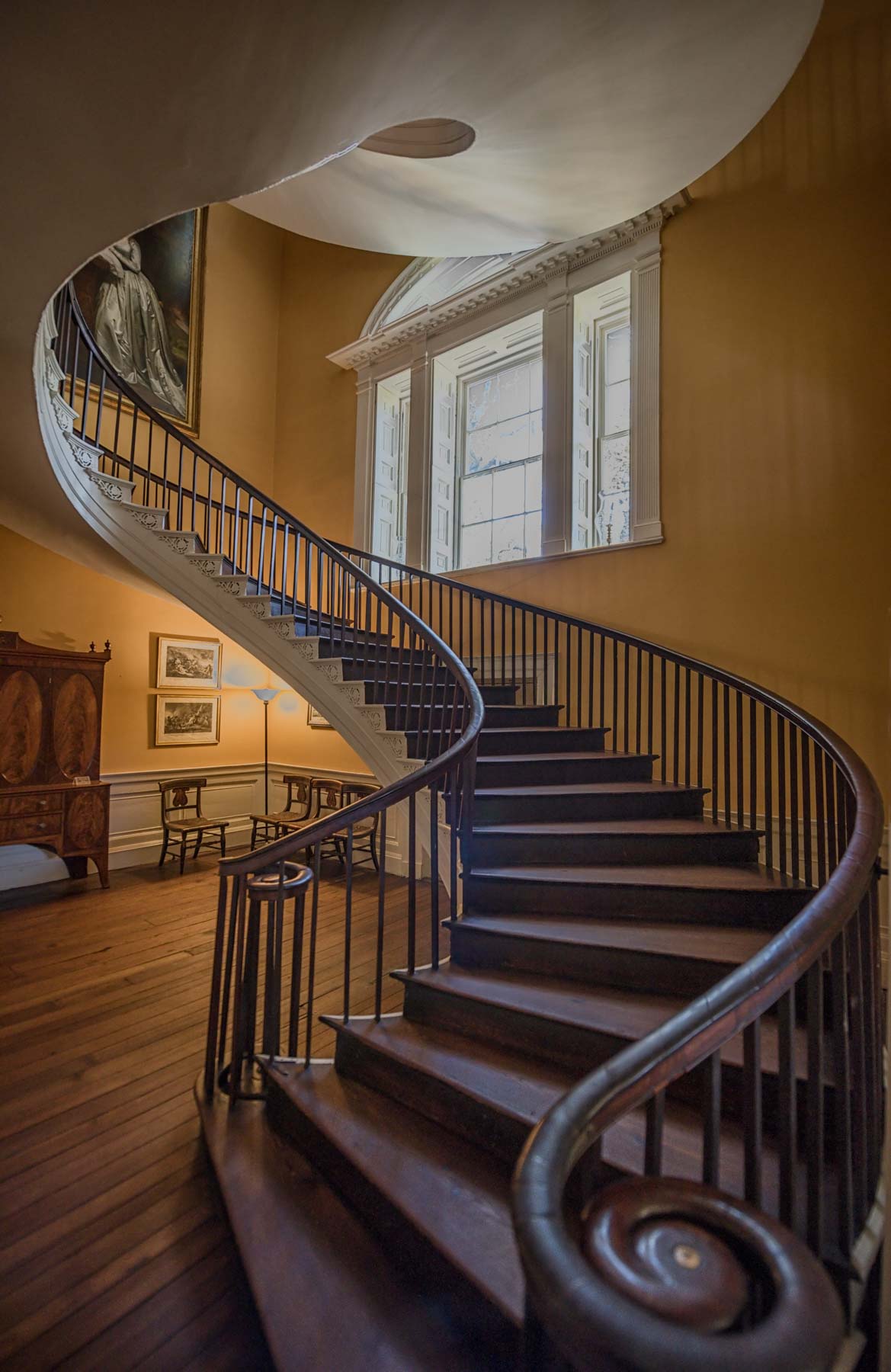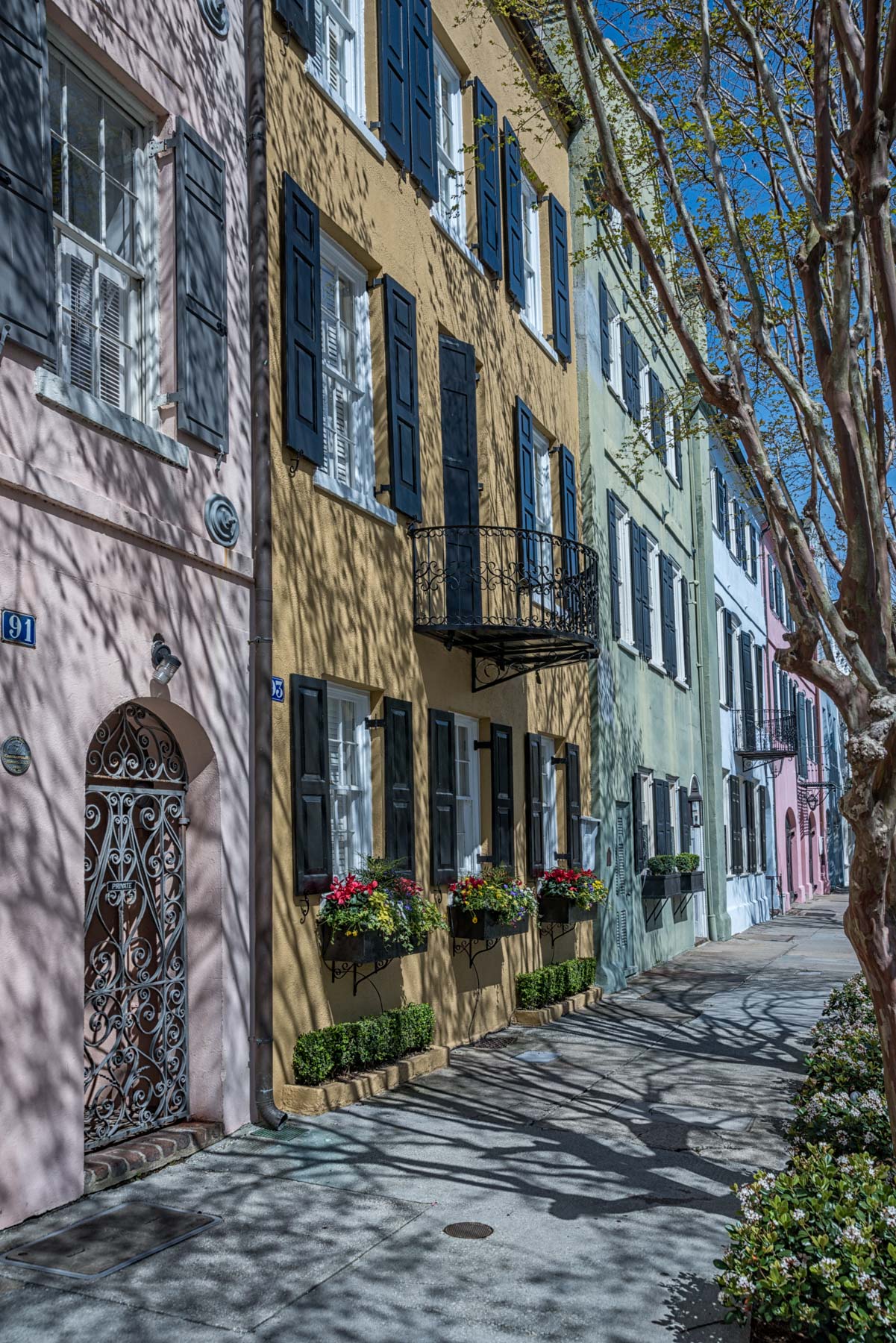Charleston, South Carolina
Charleston, South Carolina, is known for its lavish history, unspoiled architecture, good food, and friendly people. It is a top-rated tourist destination, especially during early spring when the azaleas bloom. In 2016, Charleston was ranked the "World's Best City" by Travel and Leisure magazine and has been voted "America's Most Friendly City" several times. If you want to expand your photography beyond the exotic and alien beauty of the southwest, Charleston is worth visiting.
Favorite Locations
| Location | Description |
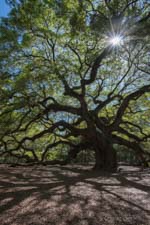 Angel Oak |
Angel Oak is a spectacular 500-year-old live oak. Angel Oak was once thought to be the oldest tree east of the Mississippi; many cypress trees are older. I found Angel Oak to be very difficult to shoot. There were always many people present; some tree branches had artificial support, and many signs indicated that you shouldn't sit on the branches. Tripods are not allowed, though I'm told there should be no problem if you go early. A wide to ultra-wide-angle lens will be useful. |
 Arthur Ravenel Jr. Bridge |
Best shot well after dusk from the bridge's east side. Shoot a few hundred yards north of the Renaissance Charleston Harbor Hotel. This area seems to be under construction and may not be accessible in the future. |
 Boone Hall through Gate |
I suggest you arrive at the opening and start by shooting the long row of moss-draped oaks along the approach. Shoot the plantation house through the gate at the plantation entrance and the slave (perhaps more politically correct "enslaved person") quarters. I didn't shoot the plantation manor as it is a reconstruction built in the 1930s. See http://boonehallplantation.com/ for hours, fees, and other information. |
 Drayton Hall |
Shoot the manor from across the small pond about 100 yards to the south. The manor interior is unrestored and merits photographing. Tripods are not allowed. Stop at the small pond on the entrance road loop when you leave. We saw Egrets, Herons, and a Wood Stork here. Wood Storks were on the "endangered" list until 2014 and are now considered "threatened." More information about Drayton Hall can be found here. |
 Edisto Boneyard |
Best shot at sunrise or earlier when tides are low. When tides are high, the beach is inaccessible. A tide table can be found at http://sc.usharbors.com/monthly-tides/South%20Carolina-Folly%20Island%20to%20Edisto%20Beach/Edisto%20Beach . Consider using long exposures to smooth out the water. Botany Bay opens one hour before sunrise and closes one hour after sunset. There is an automated gate that controls access. Botany Bay is closed on Tuesdays. Admission is free. Botany Bay is 45 miles south of Charleston, just off SC Highway 174. After signing in at the entrance gate kiosk, drive 3.2 miles and turn right to the parking area. Hike southwest about .5 miles on the Pockoy Island trail to get to the beach. Watch for alligators on the walk, especially if you have children with you. |
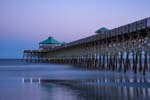 Folly Pier |
The Folly Beach Pier is the second longest on the East Coast. It runs south-southeast and photographs well at both sunrise and sunset. At sunrise, capture a silhouette and sunburst and the rays of light cast over the water or the color in the sky. At sunset, capture the well-spaced piles and their shadows. After sunset look for the reflected lights on the pier, and the Earth's Shadow and the Belt of Venus. Long exposures can add an ethereal look to the water at any time. |
 The High Battery |
The High Battery is best shot pre-dawn from the Historical Charleston Foundation parking lot when you'll get lovely reflections of the battery's lights in the Cooper River. Long exposures will again smooth out the water. The Historical Charleston Foundation parking lot is labeled "No Trespassing," so use it at your own risk. I suggest parking along the east side of East Bay Street and walking into the lot. Pre-dawn, you are unlikely to be disturbed. |
 Magnolia Plantation and Gardens |
This plantation is best known for its romantic gardens, perhaps the last large-scale gardens of this type in the US. Unlike formal gardens, romantic gardens are designed to appeal to emotion rather than reason. They eschew structure and symmetry in favor of a natural look. For more information about romantic gardens, see http://www.magnoliaplantation.com/horticulture.html. Magnolia should be visited on a windless, bright, overcast day. You want a day without direct sunlight. Alternatively, bring a reflector or diffuser to soften harsh shadows. Tripods can and should be used in the gardens. The plantation house veranda is also magnificent and fully surrounds the home. Peacocks are often present in the yard. More information about Magnolia Gardens can be found here. |
 Middleton Place |
There's much to photograph at Middleton Place. The gardens are striking, and many shops feature potters, weavers, and a blacksmith. The stableyards include water buffalo, goats, peacocks, and other animals. Be careful when walking the grounds; there are many alligators. I mistakenly walked within a few feet of a five-foot gator before seeing it lazing near a pond. It nearly gave me a heart attack, much to the amusement of others. More information about Middleton Place can be found here. |
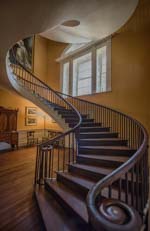 Nathaniel Russell House |
The good news, this home is simply magnificent, especially the spiral staircase. The oval drawing room, used by women following dinner, is also quite beautiful. The bad news is that the house is very crowded, with many tours running simultaneously, and the tours are on a quick schedule. Tripods are not allowed, but there would be no time to set one up, even if they were. I was the black sheep of the tour I was on and was constantly harassed by the house docent to keep things moving. My bad! Another downside was that the third floor was closed, so shooting from the top of the spiral staircase was impossible. Even so, the house should be on your list of things to shoot in Charleston. A wide angle is needed for the spiral staircase. |
 Old Sheldon Church Ruins |
Old Sheldon Church was originally called Prince William's Parish Church and was built between 1745 and 1753. It was burnt to the ground by the British during the Revolutionary War and rebuilt in 1826. During the Civil War, Sherman gutted it, and the interior materials were used to rebuild other burned homes. The church lies among scattered graves and Spanish moss-covered oak trees. The best side faces west, so mid-late afternoon should be the best time to photograph it. Use oak tree limbs and moss to frame the church. You can minimize perspective distortion by shooting from further back or using a wide angle to emphasize the distortion. |
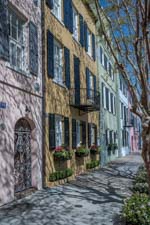 Rainbow Row |
The colorful facades of Rainbow Row face east so plan to shoot in the morning once the sun is high enough in the sky to light them. |
Google map of the Charleston, North Carolina area

To view the map in Google Maps please click anywhere on the map above.
- Click to download a KMZ file (Note - in IE Right Click and choose Save Target as).
- Click to download a KML file (Note - KML Files do not include custom icons).
- Click to download a GPX file (Note - in IE Right Click and choose Save Target as).
